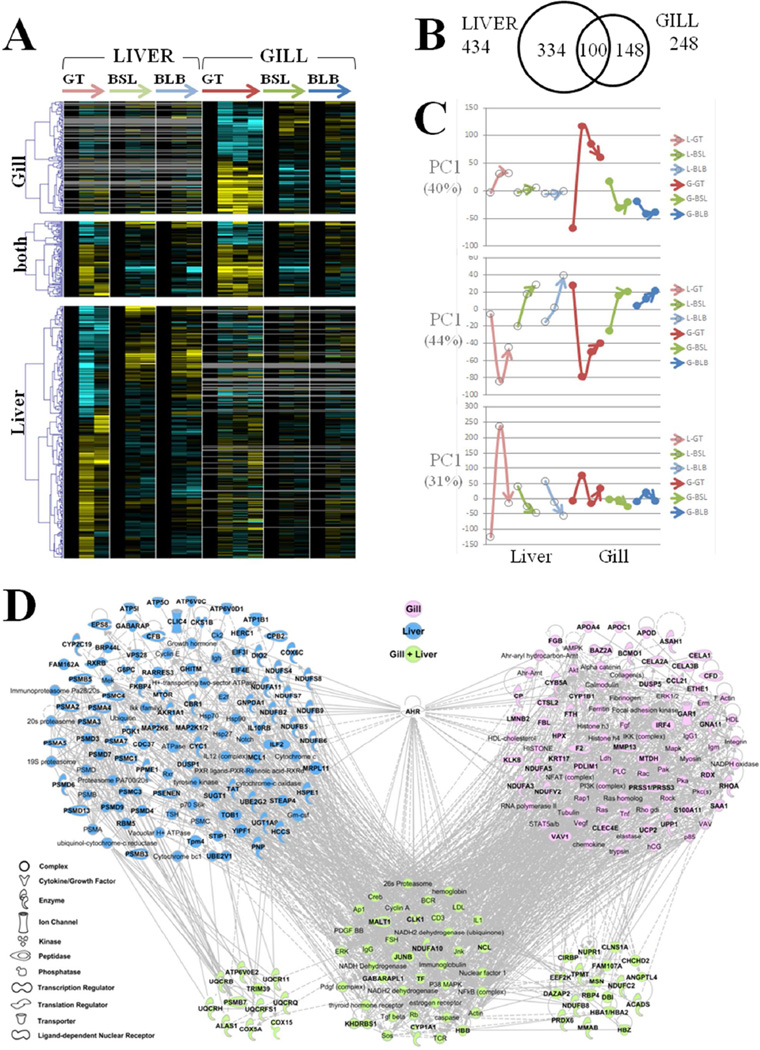Figure 1.
A–D. Transcriptomics. Patterns of expression for the genes that showed site-dependent expression throughout the oiling event (genes with significant time-by-site interaction). (A) Clusters of genes with gill-specific (top cluster), liver-specific (bottom cluster), and common (middle cluster) expression response between tissues, where columns are mean expression for a treatment, rows are genes, and color of cells indicate fold up-regulation (yellow) or down-regulation (blue) relative to pre-oil controls per site. Columns are organized by consecutive time-points within sites, where sites are Grand Terre (GT), Bay St. Louis (BSL), and Bayou La Batre (BLB). Three consecutive time-points are pre-oil, peak oil, and post-oil (left to right) in 2010. Gills were sampled at a fourth time-point at the GT site one year later (August 2011). (B) Venn diagram indicating number of oil-associated genes expressed per tissue. (C) Plots of principal component 1 (PC1) from principal components analysis of the trajectory of transcriptome change through time and between sites for liver (open symbols) and gill (closed symbols). Red, green, and blue represent the trajectories of time-course response (base through head of arrows represent first through last sampling times) at sites GT, BSL, and BLB, respectively. Top, middle, and bottom panels represent genes that were gill-specific, common to both tissues, and liver-specific, respectively, mirroring the clusters represented in the heatmap. In brackets is the proportion of variation accounted for by PC1. (D) Interaction networks for genes that were gill-specific (pink), liver-specific (blue), or common between tissues (green), in their transcriptional response. Bold symbols represent genes included in the analysis, whereas other genes form connections with one degree of separation. The common (green) set of genes are separated into three clusters, where the middle cluster is equally connected to the gill and liver networks, but the left and right clusters primarily associate with the liver or gill clusters, respectively.

